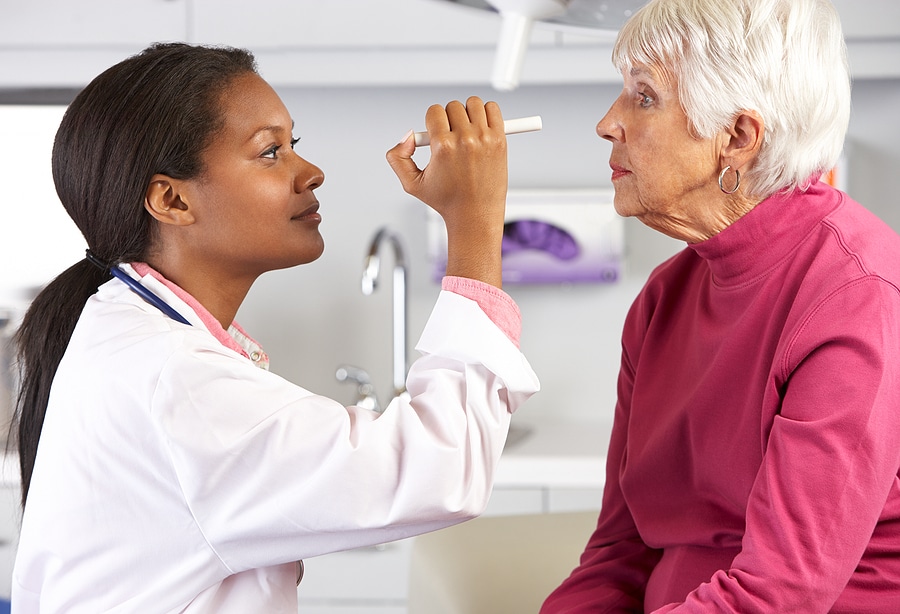
One common condition that can affect an elderly person’s vision is cataracts. Cataracts are a cloudy film that appears on the lens of the eye and they are often age-related. While a person may have one for years without even realizing it, once symptoms begin to appear and interfere with daily living, providers will often recommend surgery to restore vision.
One of the steps your loved one can take to save her vision this month and all year long is to always attend those routine eye exams and consent to have the optometrist perform the needed tests to detect any eye or vision problems before the damage is so great it interferes with daily life and cannot be restored.
Factors that Increase the Risk of Developing a Cataract
Risk factors for developing cataracts fall into three categories – environmental, genetic, and medical.
Environmental Risks for Cataracts
These risk factors are usually caused by items in a person’s environment, which may or not be able to be altered for eye protection.
- Air pollution
- Tobacco smoke
- Exposure to industrial chemicals
- Long-term exposure to UV rays from the sun without protection
- Pesticide exposure
- Alcohol use
Genetic Risks
- Family history of cataracts
- Age-related genetic mutations
Medical Risks
Some other health conditions can increase the risk of your loved one developing a cataract:
- Diabetes or high blood sugar levels
- Other eye diseases such as retina pigmentosa or uveitis
- Having had eye surgery such as surgery for glaucoma
- Medications for conditions like rheumatoid arthritis
Cataract Symptoms
- Your loved one may complain that her vision seems cloudy, foggy, or blurry and ask if there is something in the air causing everything to appear as if it’s under a film.
- Your loved one may be more sensitive to bright sources of light such as the sun, lamps, or headlights.
- Your loved one will indicate she’s having problems seeing at night.
- Your loved one might notice she doesn’t see color as well as she used to. Everything will look slightly faded.
- You’ve noticed your loved one needs more light to read.
- Your loved one may notice halos or glare around sources of light.
- Your loved one’s vision prescription has changed and her near-sightedness may get worse.
Planning for Home Care Assistance After Cataract Surgery
Once the cataract begins to interfere with daily living, the only way to remove and restore clear vision is with surgery. Cataract surgery is extremely safe and common, but your loved one will still need some help during the recovery period. If she is unable to stay with a family member or have someone stay with her, arranging for home care assistance during her recovery period is a great option for allowing her the ability to recuperate at home while providing the assistance she needs.
After surgery, your loved one might have some restrictions on her activities such as carrying heavy objects or even driving. A home care assistance provider can help provide needed transportation when she cannot drive herself as well as help her with home chores like washing clothes, taking out the garbage, or anything else that might require her to lift or carry something too heavy for her during cataract surgery recovery. Full recovery can take from four to eight weeks but your loved one will begin to see better within days after the surgery.
If you or an aging loved one are considering home care assistance in Rockville, MD, please contact the caring staff at Care At Home today. 301-970-9706
- Five Home Safety Ideas for Seniors - May 27, 2025
- 24-Hour Home Care: Special Considerations for Seniors With Dementia - May 9, 2025
- The Best Social Engagement Activities For Seniors At Home - April 25, 2025
